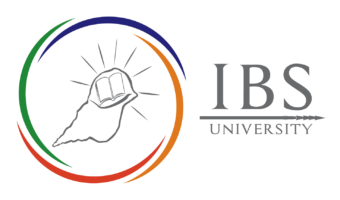The Human Element VS AI Tools in Content Writing
May 28, 2025 2025-05-28 15:35The Human Element VS AI Tools in Content Writing
The craft of writing, or the act of it, from a writer’s perspective, is a form of ritual. It’s an activity where writers of various backgrounds engage wholeheartedly. In other words, they pour their hearts into it, with vigorous enthusiasm for the cause. But as time evolved, so did everything else, hence, the dawn of a new era and a new challenge to the human element in writing: Artificial Intelligence (A.I.).
Of course, it’s no secret that humans were the primary creators of content. But when it all boils down to generating texts in terms of speed and efficiency, AI technologies have become the new HOT!
This editorial will delve into this subtle comparison between the human element in writing versus A.I. text-generating capabilities, at the same time exploring the unique strengths and weaknesses of each device, and the implications concerning the future of this craft.
Let’s begin…
- Power of the Human Element
The human element always promises the unrivaled ability to infuse all aspects of writing with genuine emotion. Subsequently, this allows the reader to quickly establish a deeper connection with the narrative, further achieving the effect of what we know as ‘emotional connection’.
For the most part, writers (humans that is) always engage their work with creativity and authenticity. Often, this gives birth to unique narratives and perspectives that tend to captivate their readers.
Through the mastery of expressive language, human writers can easily convey complex ideas and delicate distinctions into simple and relatable narratives. Thus, enriching the overall reading experience.
2. The Rise of AI in Content Writing
AI writing tools, on the outset, come complete with unprecedented efficiency and scalability. This means they have the profound ability to generate large volumes of content in a matter of seconds. Better said, in a fraction of the time it takes for a human writer to create content.

More so, AI algorithms excel at maintaining consistency and accuracy in writing. Hence, they minimize, errors and mostly keep the narrative steady in tone and structure. Albeit the human element dictates this premise.
Nevertheless, routine content creation tasks are easily automated by AI, which helps to free up human writer’s time so they can prioritize other more creative and innovative tasks.
3. Implications for Industries and Ethics
The surge in AI generated content in recent times does pose certain challenges to industries such as journalism and publishing, in terms of authenticity, quality and editorial integrity.

Marketing and advertising, on the other hand, share similar sentiments. However, one cannot deny the fact that AI tools have made clear-cut headway in both respects, despite data privacy concerns, possibilities of manipulation and bias.
These are all prognoses of ethical considerations, which also encapsulate issues in transparency, accountability and the threat of misuse or manipulation in especially content writing.
4. Evolving the Role of Human Writers
Despite the many differences being pointed out, the positive take we can from this assertion is that human writers can easily team up with AI tools to boost productivity and work more efficiently.
A human writer can leverage AI technology to amplify his or her creative ability. Not only that, BUT AI technology can ALSO inspire human writers to hone their skills, while giving them the urge to push the boundaries of creativity and innovation. So rather than seeing AI as a thinking machine soon to supplant human effort, see it as a personal or a professional tool, especially in writing content. A carpenter needs his tools to build a house. Likewise, a writer needs to write. Before, a human writer would rely on their typewriters and typewriter ink to get the job done. Now you have smartphones, laptops and … well, you guessed it, ChatGPT.
5. Strategies for Integration and Quality Assurance
It’s not uncommon, in today’s culture, to integrate AI tools into the content creation workflow, simply because of their efficiency and productivity outcomes. But a balance or a middle ground, guided by mindful attentiveness and quality checks, must be maintained. Because in this space alone, quality control plays a key part in helping human writers produce not just refined content, but work that stays true to its purpose—as they carry the responsibility of upholding the authenticity of AI-generated material.

In any case, human writers and A.I. technologies must continuously learn and evolve to meet the evolving demands of content creation, adapting to changes in technology, audience preferences, and industry standards.
Conclusion
Please rewrite the following without the cliches “navigate the evolving landscape” and “resonates”, while all else remain intact

In the ongoing debate between the human element and A.I. in content writing, there is no clear winner. While A.I. offers unparalleled efficiency and scalability, the human element remains indispensable for its emotional depth, creativity, and nuance. As content creation continues to evolve, it’s essential to find a balance between human ingenuity and technological innovation, using the strengths of both to produce work that connects with audiences and remains relevant over time.
It’s just like the judge, the jury and the executioner. You’re the judge and the jury. AI is an executioner. A carpenter needs his trade tools to build. Likewise, human writers need their tools of trade to write. Before, a human writer would need ink, pen, paper and a typewriter. Nowadays, especially in writing, you have a laptop, a smartphone, and ChatGPT.
Contact:
IBSU Media Team
IBSUniversity
PO Box 5181, Boroko, NCD,
Papua New Guinea
M: +675 7028 8030 | 7411 4100
Editing & Narrative Direction: IBSU Communication & Creative Solutions Specialist
Disclaimer: This article is intended for discussion purposes only. It offers a general perspective on the use of AI in writing and does not serve as professional advice or a definitive stance for or against either method. Readers are encouraged to be mindful when drawing their own conclusions.







